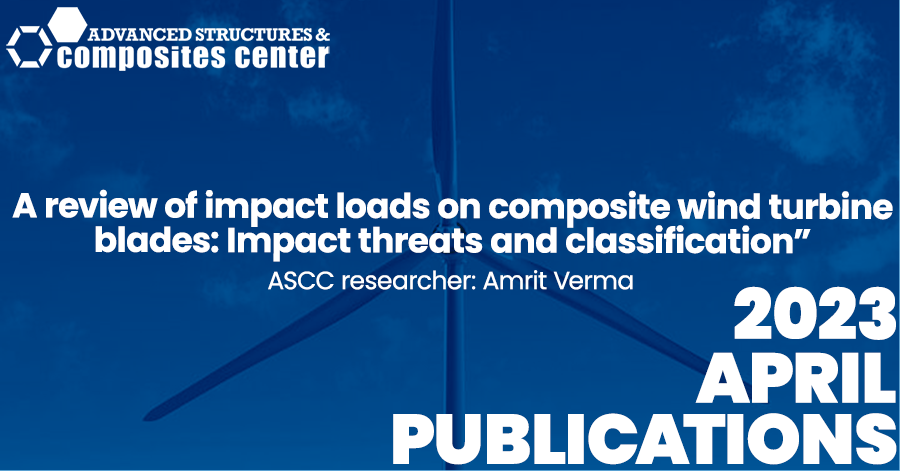
ASCC’s Amrit Verma published in Renewable and Sustainable Energy Reviews
Orono, Maine – An article led by ASCC researcher and Assistant Professor of Mechanical Engineering Dr. Amrit Verma was published in Renewable and Sustainable Energy Reviews, a notable wind energy journal with an Impact Factor (IF) of 16.79, titled “A review of impact loads on composite wind turbine blades: Impact threats and classification”. The researchers investigate the impact loads on composite wind turbine blades, including identifying and classifying impact threats on blades, describing their quantitative and qualitative characteristics, discussing vulnerable blade regions susceptible to impact loads and ultimately providing modeling guidelines for damage-tolerant blades. Other authors include Jiquan Yan, Weifei Hu, Zhiyu Jiang, Wei Shi, and Julie J.E. Teuwen.
To address the various impact threats and the regions vulnerable to them, researchers explore different impact threats and how they affect wind blades at various points in service life. The study delves into the various stages of a wind turbine blade’s lifespan, emphasizing that impact threats can arise at any time, such as collisions with wildlife during operations or other equipment and structures during installation process. Impact threats were compared based on impact velocity and energy, with some being considered “soft” hits like hail and rain impact and others “hard”, such as transportation collisions or helicopter collisions during maintenance. It was found that high velocity impacts are associated with the operation stage while transportation, installation, and maintenance stages are associated with low velocity impacts. This paper is especially useful for those working on wind turbine blades, as the review serves as a baseline report for designing damage-tolerant blades.
A review of impact loads on composite wind turbine blades: Impact threats and classification
Authors: Amrit Shankar Verma, Jiquan Yan, Weifei Hu, Zhiyu Jiang, Wei Shi, Julie J.E. Tuewen
Renewable and Sustainable Energy Reviews (2023)
Full Article
Received 14 September 2022 / Revised 23 February 2023 / Published 8 March 2023
Abstract
A fiber-reinforced composite wind turbine blade (WTB) is exposed to numerous impact threats during its service life causing damages that can be detrimental to its structural integrity. Currently, impact loads are not considered during blade design, so high safety factors are introduced, which result in a conservative design. However, as wind turbine blades become stiffer and lighter and health monitoring systems become more sophisticated, the design process is shifting toward damage-tolerant approaches. The design philosophy accepts damages to the structure, but it also requires that the damaged blade still meet structural and functional requirements. This design procedure requires a comprehensive understanding of different impact threats and their characteristics, which is currently unavailable in the public domain. This paper is a first attempt to review the impact loads on composite wind turbine blades. The aim of the current paper is to (a) identify different sources of impact threats on wind turbine blades during different stages of their service life, (b) describe their qualitative (causes and vulnerable regions) as well as quantitative characteristics (size, mass, and velocity of impactor), and to (c) provide modeling guidelines by comparing these impact threats using five different criteria – (i) relative deformability of projectile and wind turbine blade, (ii) impact velocity, (iii) kinetic energy of impact, (iv) repeatability of impacts and (v) nature of the impact. The review paper will be of special interest to researchers working on wind turbine blades and will serve as a baseline report for designing damage-tolerant blades. Recommendations are also provided for future research.
Keywords: Wind turbine blades, Impact loads, Damage tolerance, Damages, Composite design
Contact: Grace Bradley, grace.a.bradley@maine.edu
